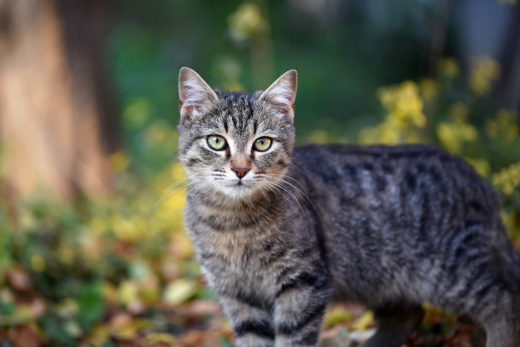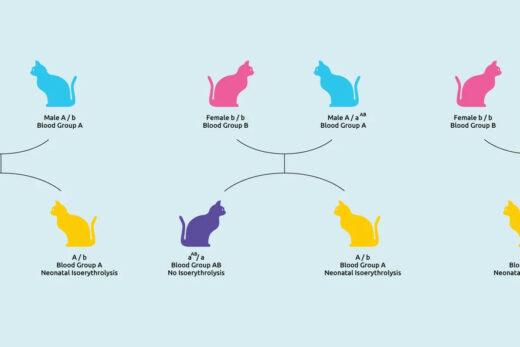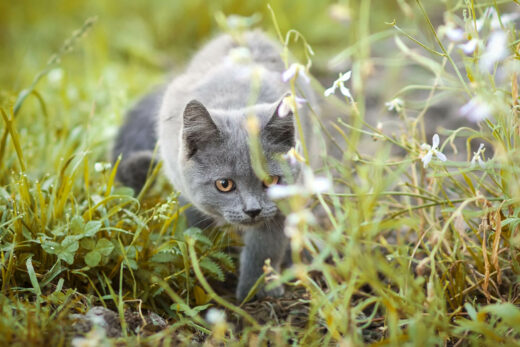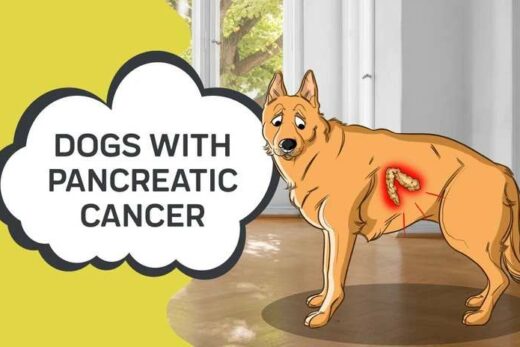Cats are wonderful pet companions with a wide range of personalities, but they have one troubling thing in common: they’re predisposed to conceal potential health issues. This happens because if they allowed weaknesses to show in the wild – limping, slow reaction time, vocalizations of discomfort – they would be quickly targeted by larger predators.
Those instincts stay firmly in place even when cats live as indoor-only companions, which means that health concerns are often very serious by the time they’re observed. Nasal lymphoma in cats is one of those serious ailments, but pet owners will stand a better chance of catching any “red flags” if they’re armed with plenty of knowledge. How can one tell the difference, then, between an innocent sneeze and a symptom of something more sinister? Here’s a few things cat lovers need to know:
Does My Cat Have Nasal Lymphoma?
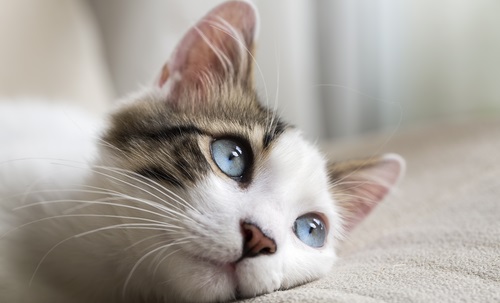 Cats are fastidious groomers, often spending most of their scant waking hours grooming themselves by licking their fur directly, or licking a paw and wiping it over hard-to-reach areas. It’s normal and healthy for your cat to groom his face regularly, particularly if he’s just finished eating or drinking. If he exhibits any of these signs, however, you may want to take a closer look at his behavior:
Cats are fastidious groomers, often spending most of their scant waking hours grooming themselves by licking their fur directly, or licking a paw and wiping it over hard-to-reach areas. It’s normal and healthy for your cat to groom his face regularly, particularly if he’s just finished eating or drinking. If he exhibits any of these signs, however, you may want to take a closer look at his behavior:
- Rubbing his face on the ground with body language that indicates discomfort: This is different than “marking” behavior, which prompts him to scrub his cheek against his owner or the edges of his pet parents’ belongings and property with long, single-direction passes. He may tilt his head into these marking moves and purr loudly – he’s letting the world know “this is mine, and I consider it a safe place of contentment for me.” Rubbing, by contrast, will be a move that looks like he is trying to scratch an itch; he may vocalize as he’s pushing his face against a surface or object with erratic movements and pained body language.
- Over-grooming to the end of losing fur: Grooming can indeed go too far, and a cat under stress or pain may stop grooming his face altogether or groom so frequently his fur falls out in patches or refuses to grow back in. If a domestic cat is missing fur on his face or cheeks and hasn’t been in a catfight anytime recently, there could be deeper health concerns affecting him. Anytime your cat is experiencing feline hair loss you should take him in to the veterinarian for further examination.
- Odd head movements or a loss of grace or balance: Just as people’s faces make some odd expressions when a sneeze is about to occur, health issues with a cat’s nose could leave him in a perpetual pre-sneeze state, with irritation or tickling in his nostrils. As cats rely upon stealth and focus to hunt, any nose issues will be especially sensitive for them, so don’t be surprised if he’s grumpy as well. If pet parents notice their cat shaking his head a great deal or failing to make graceful leaps up onto furniture as usual, there may be a nose issue at play.
- Excessive fluid from the nose, especially with a pink tinge: Cats can certainly get sick, and even get feline colds, but lingering nasal discharge is a sure sign a cat requires professional care. Clear mucous could indicate a cat allergy to a seasonal plant, while yellow or greenish-hued mucous points to a bacterial infection that could spread to the lungs, and pink indicates a potential injury that has caused bleeding inside the nose.
- Constant sneezing: While allergies could be the culprit for this symptom, it’s still a good guide tip, particularly when noticed along with other signs. If the sneezing is accompanied by mucous in the nose, a cat is either sick or having an issue with his surroundings – in either case, it’s important to act quickly and bring him to the vet.
- Loud snoring: The average cat sleeps between 12 and 16 hours a day, making them surprisingly easy to catch “in the act” of sawing wood as they’re enjoying their cat nap. Snoring generally happens when there’s an obstruction in the airway of the sufferer, and felines are unfortunately not immune to that phenomena.
- Facial deformities: While some insect stings, snakebites, or parasites will cause a spot to swell up, lymphoma has the potential to cause large, ugly sores or warts to grow on a pet’s face and muzzle, causing them discomfort and potentially even difficulty eating and drinking.

